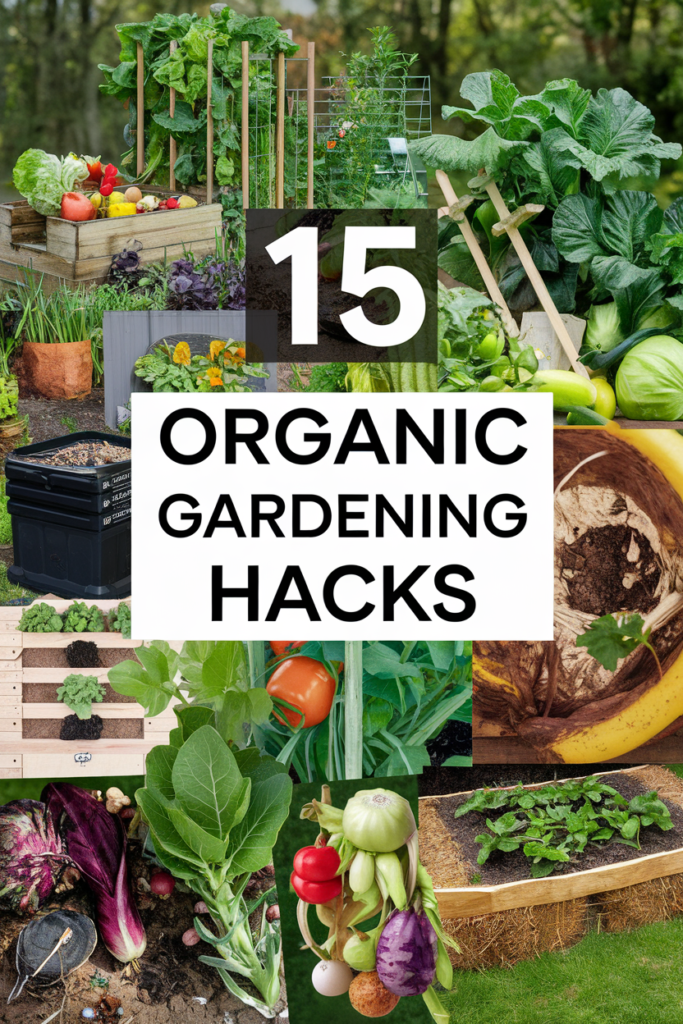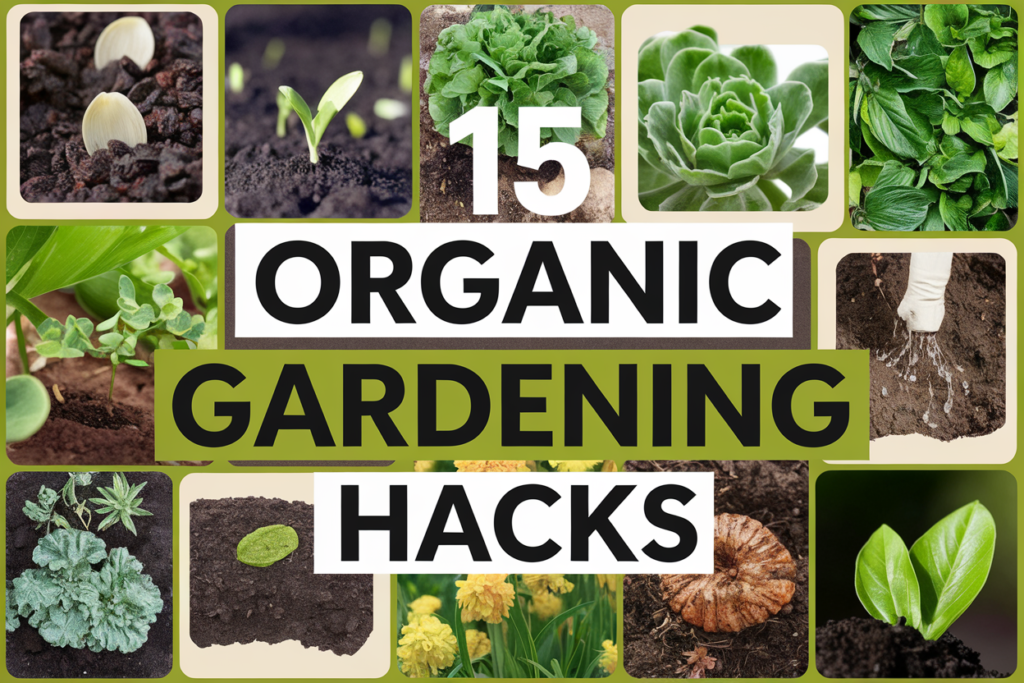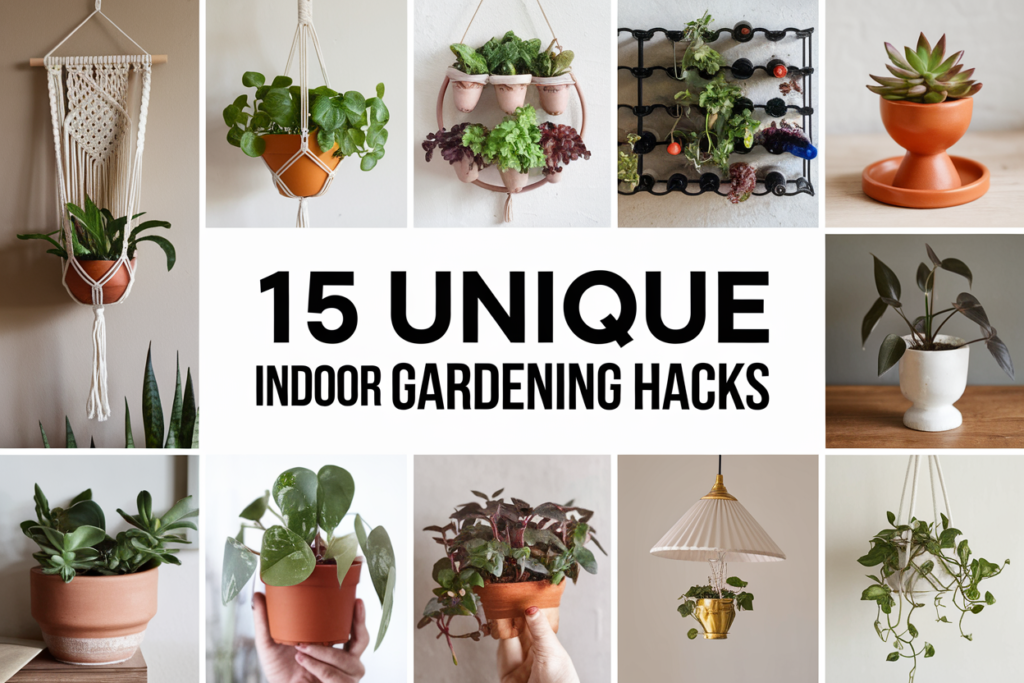Want to supercharge your gardening skills? Here are 15 handy organic gardening hacks that can help you cultivate your green thumb without the hassle. Whether you’re a newbie or a seasoned pro, these simple tips will make your gardening experience more rewarding and enjoyable. Let’s dig right in!
Use Coffee Grounds To Enrich Soil And Deter Pests.
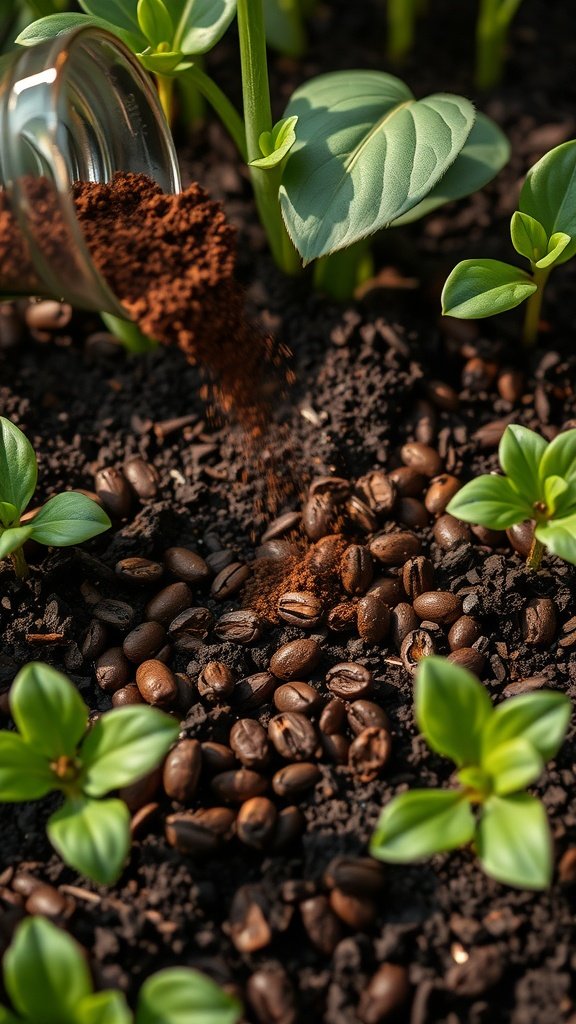
Coffee grounds are a fantastic addition to your garden. They are rich in nitrogen, which helps plants grow strong and healthy. In the image, you can see coffee grounds being sprinkled around young plants, which will boost the soil’s fertility.
Not only do coffee grounds provide nutrients, but they can also help keep pests away. The aroma of coffee can deter certain insects, making it a natural pest control method. Just spread the grounds around your plants, and you’ll give your garden a little extra protection.
Plus, using coffee grounds is a great way to recycle. Instead of tossing them in the trash, you can enrich your garden with something that would otherwise go to waste. This eco-friendly hack is a win-win for your plants and the planet!
Plant Marigolds To Naturally Repel Garden Bugs.
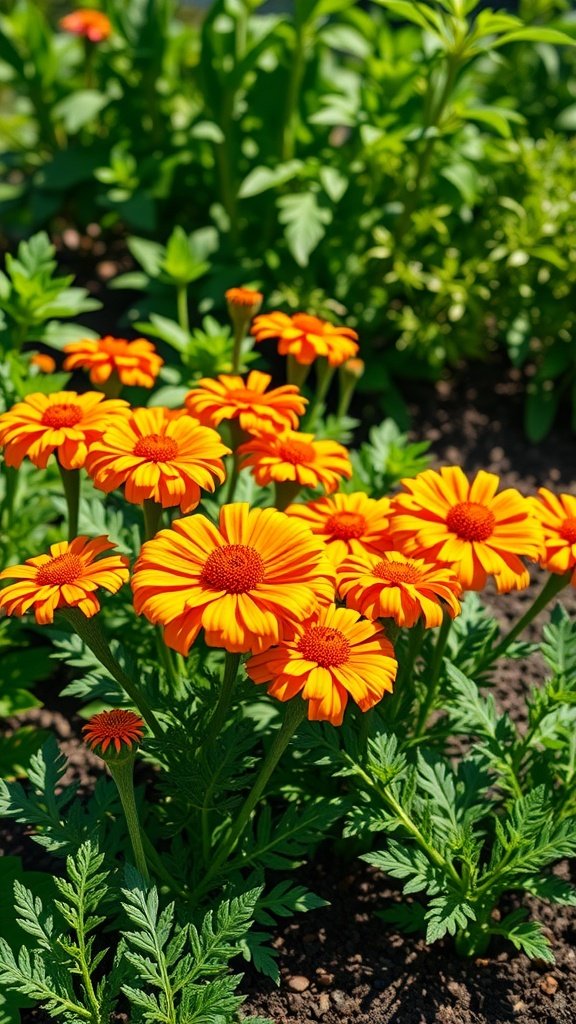
Marigolds are not just pretty flowers; they’re your best buddies in the garden! With their bright orange and yellow blooms, they add a splash of color while offering serious benefits. Planting marigolds is an easy hack to keep those garden bugs at bay.
These flowers release a scent that many pests, like aphids and nematodes, dislike. This natural repellent means fewer chemicals in your garden, making it safer for you and the environment. Plus, marigolds attract beneficial insects like ladybugs and lacewings that will help control any unwanted pests.
When planting, put them in clusters around your veggies or herbs. They’ll not only beautify the area, but their companion planting benefits will help your plants thrive. It’s a simple, effective strategy that makes gardening a bit easier and more enjoyable.
Make Homemade Compost With Kitchen Scraps And Yard Waste.
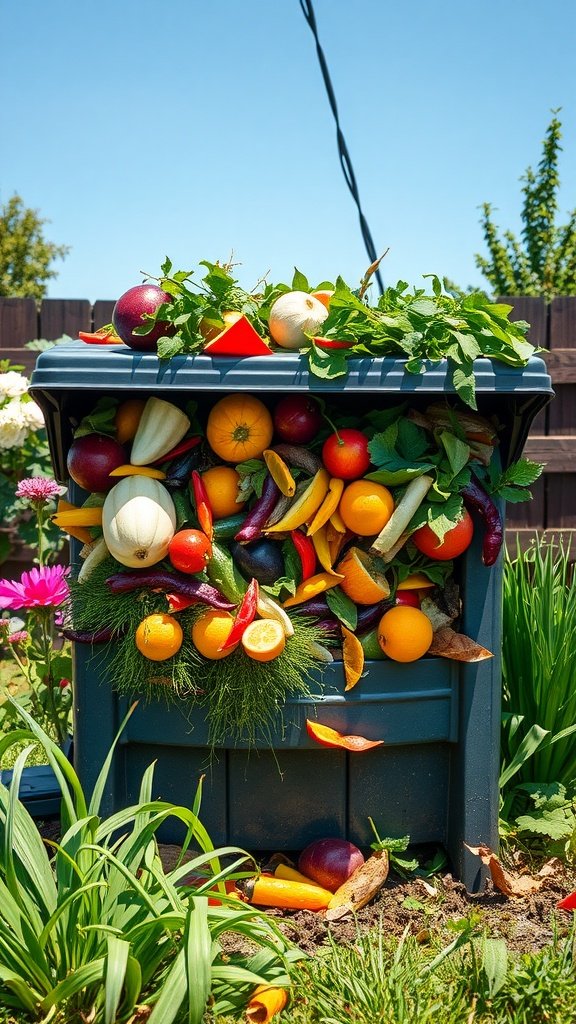
Creating homemade compost is a fantastic way to recycle kitchen scraps and yard waste. The image shows a compost bin overflowing with colorful fruits, vegetables, and green scraps. This is a perfect representation of how easy it can be to turn waste into nourishment for your garden.
Composting not only reduces waste but also enhances soil quality. The freshness of the food waste in the bin suggests that you can use almost any leftover produce. Scraps like apple cores, peels, and even small amounts of yard clippings can contribute to a rich compost.
To get started, simply collect your kitchen scraps in a container. When you have enough, layer them into your compost bin with yard waste like leaves or grass clippings. This mix creates a balanced environment for decomposition. Remember to turn the pile every few weeks to aerate it and speed up the process.
After a few months, you’ll have nutrient-rich compost ready to improve your garden soil. It’s a simple yet effective hack to boost your green thumb!
Use Eggshells To Prevent Slugs And Add Calcium To Soil.
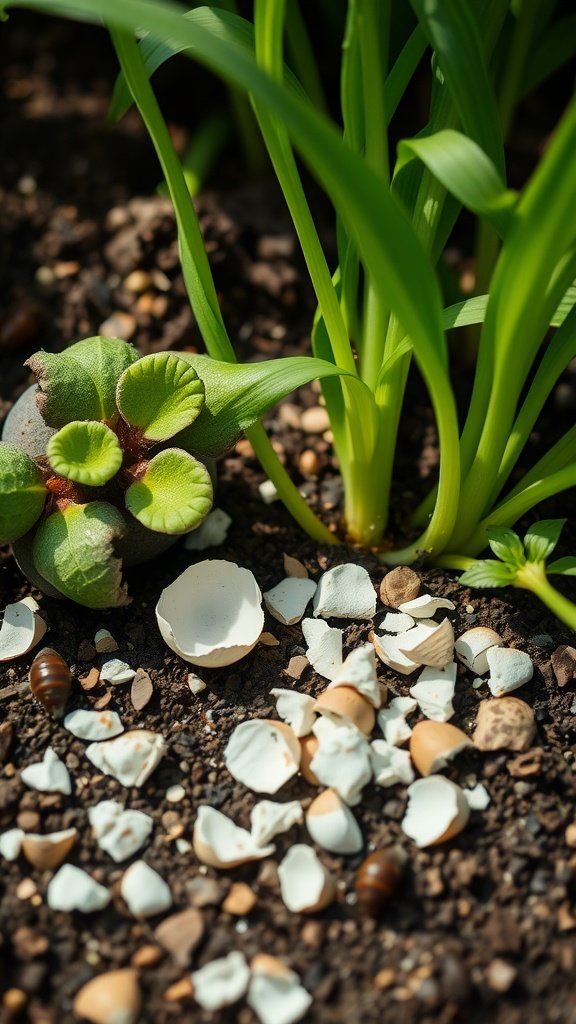
Eggshells are a fantastic resource for gardeners looking to enhance their soil health while tackling pesky slugs. The image captures the beauty of nutrient-rich soil, dotted with broken eggshells and vibrant green shoots. It’s a simple yet effective way to take care of your plants.
Crushed eggshells create a rough, sharp barrier that slugs find uncomfortable to crawl over. This natural deterrent keeps them away from your precious greens, allowing them to thrive. Plus, as the eggshells break down over time, they release calcium into the soil, which is essential for plant growth.
To use this hack, simply rinse your eggshells after cooking, let them dry, and then crush them into small pieces. Sprinkle them around the base of your plants. Not only will your garden look great, but you’ll also be using a sustainable method to nourish your soil while keeping slugs at bay!
Introduce Beneficial Insects Like Ladybugs To Control Aphids.
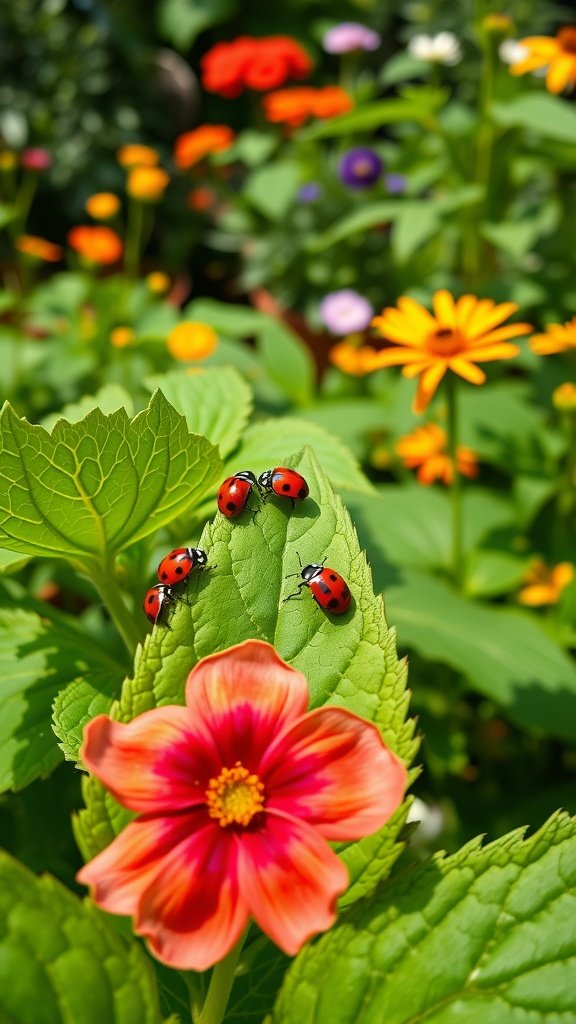
Ladybugs are a gardener’s best friend, especially when it comes to controlling aphids. These little bugs are not just cute; they are effective predators of aphids, which often wreak havoc on plants. By adding ladybugs to your garden, you can create a natural balance that reduces the need for chemical pesticides.
The image showcases ladybugs at work on vibrant green leaves and beautiful flowers. The bright colors of the ladybugs stand out against the lush foliage, making it not only a functional choice but also an aesthetically pleasing one.
To attract these helpful insects, consider planting flowers that provide nectar and pollen. Marigolds and daisies are great options. Setting up a habitat with diverse plants encourages ladybugs to stick around. Remember, a healthy garden is one where nature does its part!
Mulch Your Garden To Retain Moisture And Suppress Weeds.
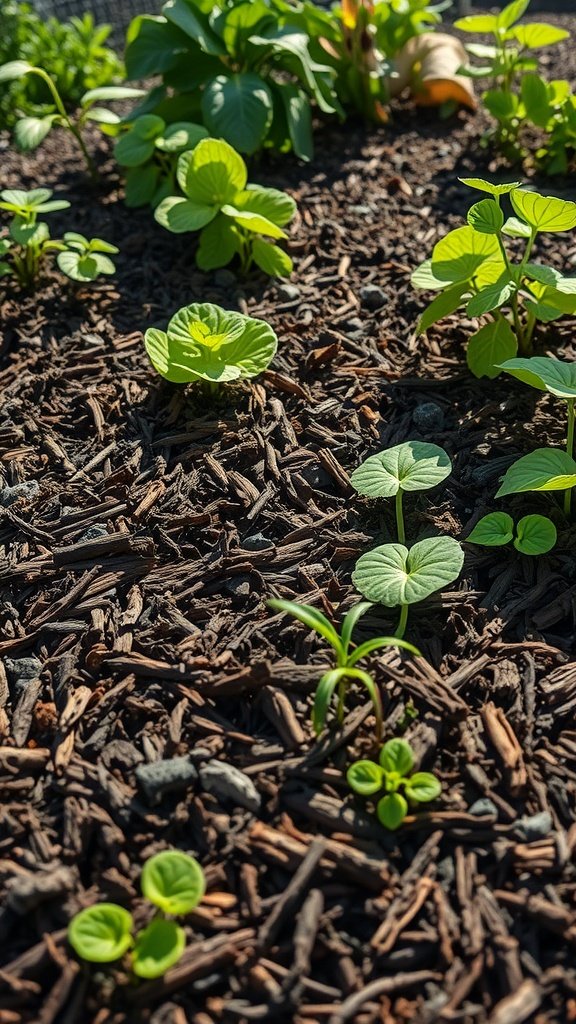
Mulching is a simple yet effective way to keep your garden thriving. The image shows a garden bed layered with dark brown mulch, surrounded by vibrant green plants. This setup not only looks appealing but serves practical purposes too.
The mulch acts as a barrier, helping to lock in moisture. This is especially important during hot days when your plants need it most. You’ll notice that the plants in the image appear healthy and well-nourished, thanks to the moisture retention provided by the mulch.
Weeds can be a gardener’s worst nightmare. The mulch layer prevents weeds from taking hold and competing with your plants for nutrients. This means less time weeding and more time enjoying your garden. As you look closely at the image, you can spot a few small weeds trying to break through, but the mulch is making it challenging for them.
Using organic materials for mulch, like wood chips or straw, also enriches the soil as it decomposes. This creates a win-win situation for your garden, making it healthier over time. So, if you haven’t mulched yet, grab some materials and give your garden a boost!
Use Neem Oil As A Natural Pesticide For Plants.
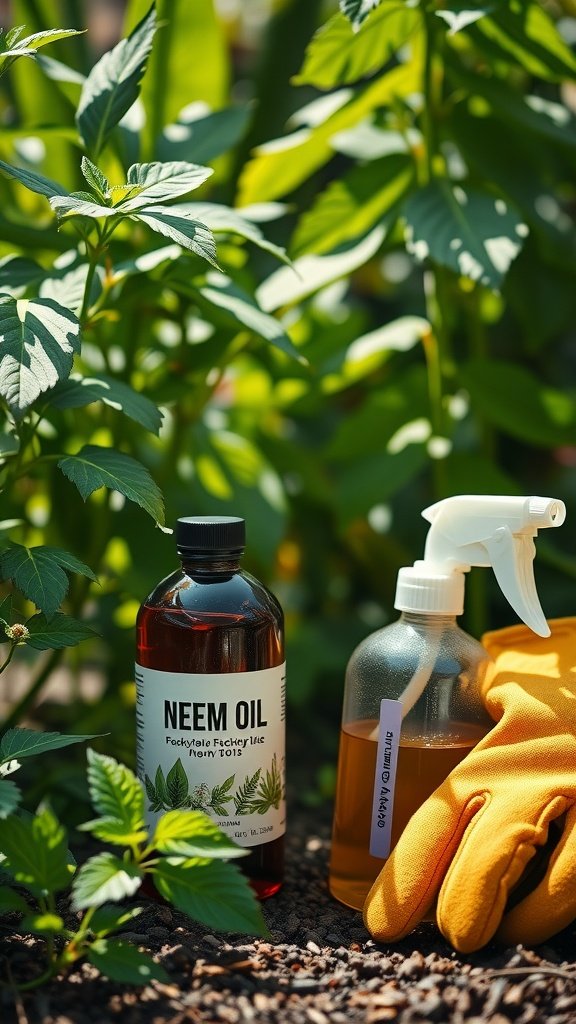
Neem oil is a fantastic choice for gardeners looking to keep their plants healthy and safe. The image shows a bottle of neem oil alongside a spray bottle and a pair of gardening gloves. This setup highlights the simplicity of using natural solutions for pest control.
Neem oil comes from the seeds of the neem tree and is known for its ability to repel a variety of garden pests. By applying neem oil, you can create a protective barrier that helps keep your plants safe from unwanted visitors.
To use neem oil effectively, mix a few teaspoons of it with water in the spray bottle. Shake it well to combine, and then spray it directly on the plants. Make sure to cover both the tops and bottoms of the leaves.
Using neem oil not only helps control pests but also improves the overall health of your plants. It’s safe for most plants and doesn’t leave harmful residues. Remember to apply it early in the morning or late in the evening to avoid burning the leaves.
Create A Diy Pest Spray With Garlic And Hot Peppers.

If you’re looking to keep pests at bay in your garden, using a DIY pest spray made from garlic and hot peppers is a fantastic choice. This natural solution is easy to make and can help protect your plants without harsh chemicals.
The image shows a clear spray bottle labeled “Pest Pit Spray,” surrounded by fresh garlic cloves and vibrant red hot peppers. These ingredients are key to creating an effective pest deterrent. Garlic has strong-smelling compounds that pests dislike, while hot peppers can irritate them, sending them packing.
To make your own spray, start with a few cloves of garlic and a couple of hot peppers. Blend them together with water, let the mixture sit for a day, and then strain it into your spray bottle. You can use this spray on your plants, applying it every week or after rain to keep those unwanted bugs away.
This DIY spray not only protects your garden but is also an eco-friendly alternative to commercial pesticides. It’s a simple and effective hack to boost your green thumb.
Grow Companion Plants To Improve Soil Health And Reduce Pests.
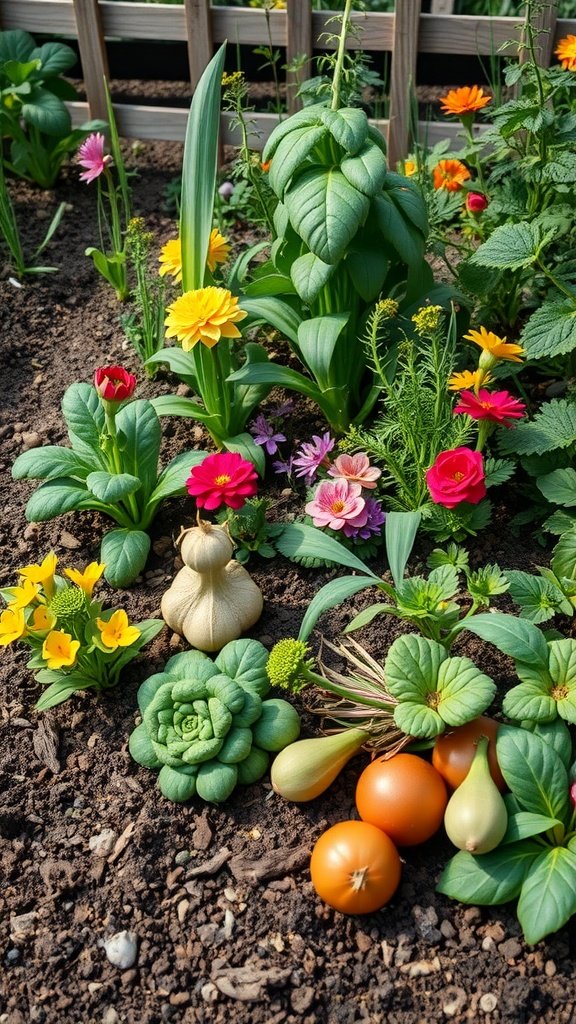
Companion planting is a fun and effective way to boost your garden’s health. By growing different plants together, you can enhance soil quality and keep pests away naturally.
Take a look at this vibrant garden image. It showcases a mix of colorful flowers and healthy vegetables, all thriving in harmony. The flowers not only brighten the space but also attract beneficial insects, turning your garden into a mini-ecosystem.
For example, marigolds can discourage certain pests, while leafy greens like kale help improve soil structure. Pairing plants wisely can lead to healthier growth and a bountiful harvest.
Consider planting tomatoes alongside basil for a flavorful combo that also helps keep pests at bay. This strategy makes gardening easier and more rewarding. So, why not give it a try? Your plants will thank you!
Use Vinegar To Naturally Kill Unwanted Weeds.
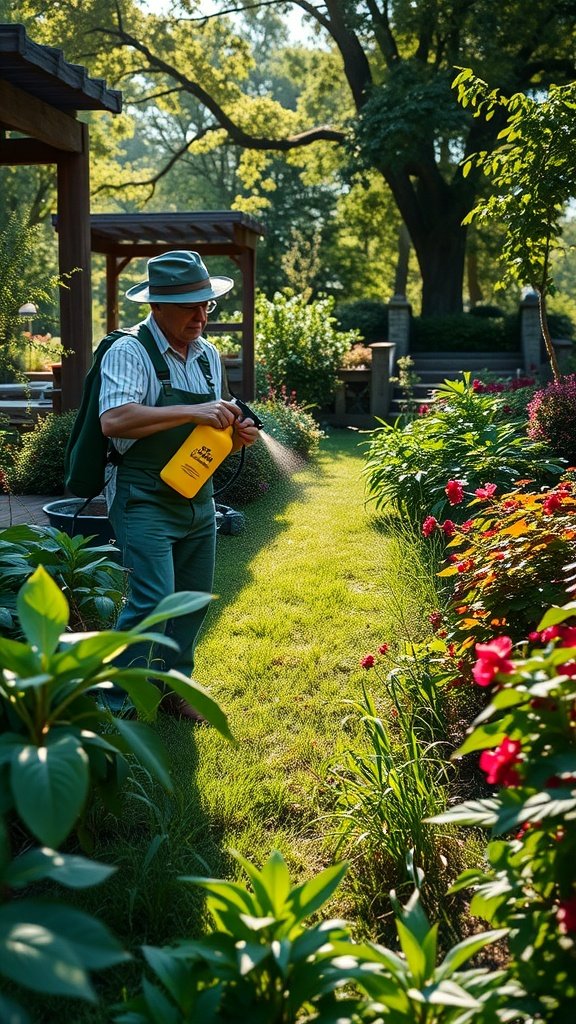
Weeds can be a gardener’s worst nightmare. They pop up unexpectedly, taking nutrients and space from your beautiful plants. One natural way to tackle this issue is by using vinegar. This common household item is not just for salads!
The image shows a gardener in a lush green space, spraying a yellow container filled with a vinegar solution. The sunlight filters through the trees, highlighting the effort in keeping the garden tidy. The vibrant flowers along the pathway remind us of the beauty we want to maintain in our gardens.
Using vinegar is simple. Just mix equal parts of vinegar and water in a spray bottle. Apply it directly to the leaves of the unwanted weeds, making sure to avoid your flowers. The acetic acid in the vinegar will dry out the weeds, helping you reclaim your garden.
Remember, vinegar works best on sunny days. The heat helps enhance its effectiveness. So grab that spray bottle and get to work on those pesky weeds!
Make Your Own Organic Fertilizer With Fish Emulsion.
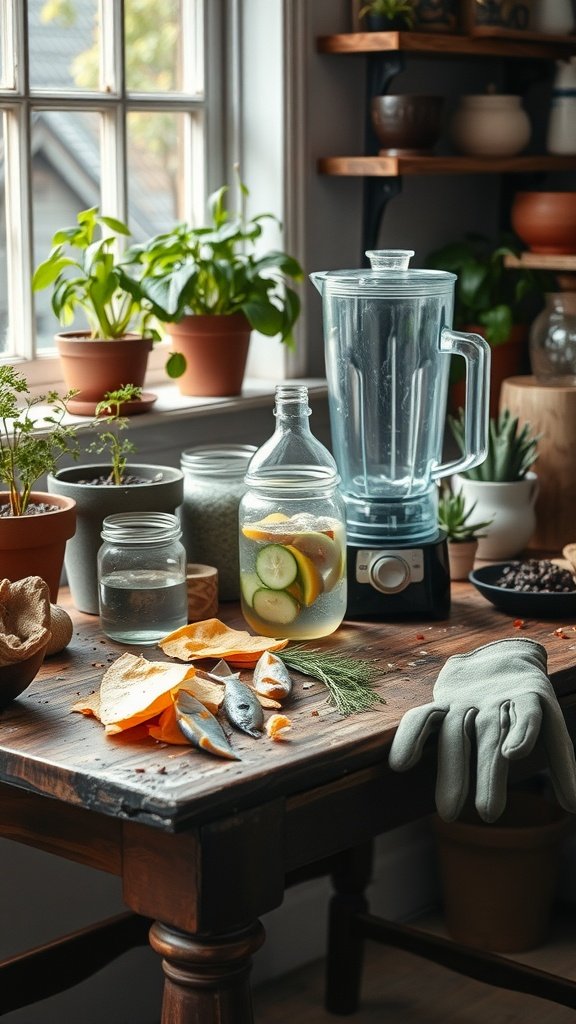
Creating your own organic fertilizer can be a rewarding experience. The image shows a cozy kitchen workspace, perfect for whipping up a batch of fish emulsion. You can see a blender ready to blend the ingredients, along with some fresh herbs and scraps like citrus peels and fish remnants on the table. This setting inspires creativity and a hands-on approach to gardening.
To make fish emulsion, you’ll need fish scraps, water, and some additional ingredients like citrus or herbs for a pleasant aroma. Simply combine the fish scraps with water in the blender, blend it all up, and then strain the mixture. The resulting liquid is packed with nutrients that your plants will love.
This homemade fertilizer is a fantastic way to recycle kitchen waste while providing your plants with a boost. The natural nutrients found in fish help promote healthy growth and can improve soil quality over time.
Collect Rainwater To Hydrate Plants Without Harsh Chemicals.
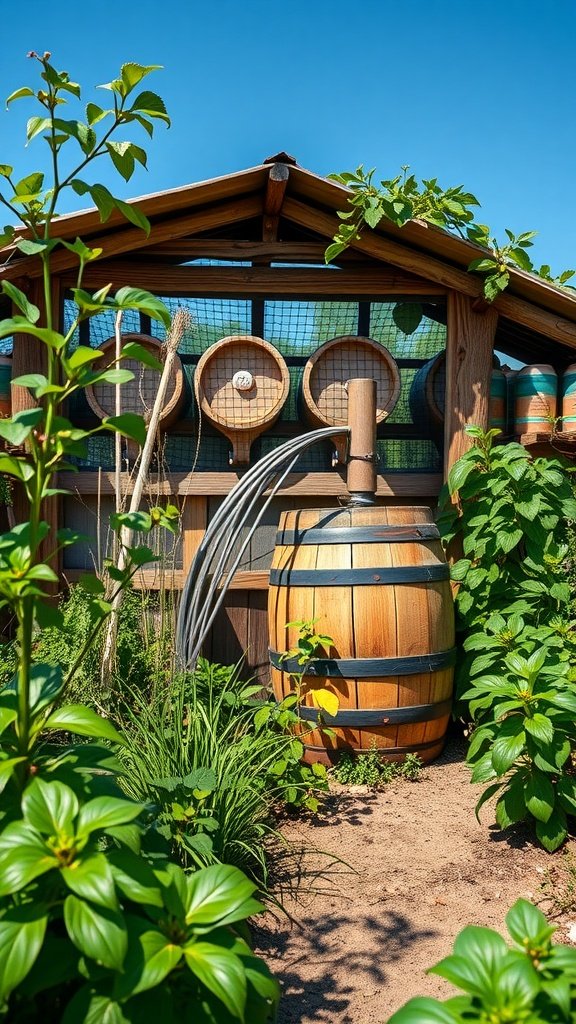
Using rainwater for your garden is a simple way to nourish your plants naturally. The image shows a lovely setup with a wooden barrel, perfect for collecting rainwater. It’s a charming addition to any garden and promotes sustainability.
Rainwater is free from chemicals often found in tap water. This makes it a healthier option for your plants. With the right system, you can gather rainwater straight from your roof. The barrels can be placed near your downspouts for easy collection.
Not only does this practice help the environment, but it also saves money on water bills. Plus, plants thrive on rainwater, which is slightly acidic. This can improve nutrient absorption, giving your garden the boost it needs.
To set up your rainwater collection system, you’ll need a barrel, a screen to keep out debris, and a spigot for easy access. Make sure to check local regulations, as some areas have guidelines on rainwater collection.
Repurpose Banana Peels As A Natural Potassium Booster.
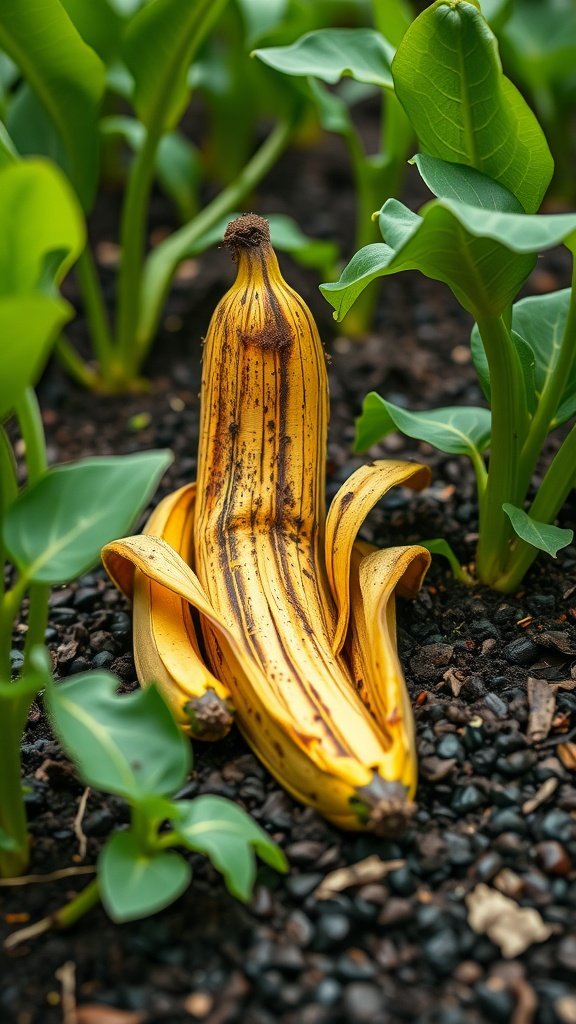
Banana peels are not just waste; they’re a treasure for your garden! The image shows banana peels nestled among vibrant green plants, illustrating how easy it is to use what you already have. These peels break down over time, enriching the soil with potassium, a key nutrient for plant growth.
To use banana peels effectively, chop them up and bury them in your garden soil. This method not only enhances potassium levels but also attracts beneficial organisms that help your plants thrive. It’s a simple and eco-friendly way to boost your garden’s health!
Another option is to soak the peels in water for a few days and then use the liquid to water your plants. This method creates a nutrient-rich solution that delivers potassium directly to the roots.
Add Compost Tea To Soil For An Extra Nutrient Boost.

Compost tea is a simple way to give your plants a nutrient boost. In the image, a watering can pours rich, dark liquid into a small container, surrounded by vibrant green plants. This method helps enhance soil health while promoting growth.
To make compost tea, start by filling a breathable bag with mature compost. Soak it in water for 24-48 hours, stirring occasionally. This lets beneficial microbes and nutrients leach into the water. Once ready, dilute the tea with more water before applying it to your plants.
This technique not only improves soil structure but also helps your plants fight off pests and diseases. Try adding it to your weekly watering routine, and watch your garden thrive!
Create A Natural Insect Trap Using Dish Soap And Water.
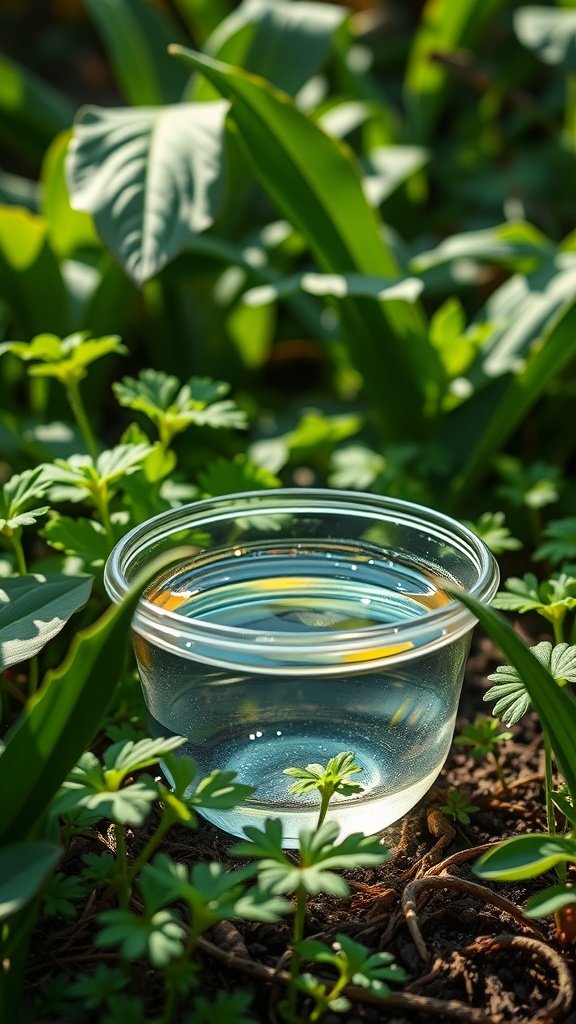
If you’re looking for a simple and effective way to manage unwanted insects in your garden, a natural insect trap can do wonders. In the image, you see a clear cup filled with water placed among various green plants. It’s a perfect setup for trapping those pesky bugs without harming your plants.
This method uses a mix of water and dish soap, which attracts insects like aphids and gnats. When they land on the water, the soap reduces the surface tension, causing them to sink. This trap is eco-friendly and easy to create.
To make it, grab a small cup and fill it with water, adding a few drops of dish soap. Place it among your plants and watch the results. It’s amazing how something so simple can make a big difference in keeping your garden healthy!
